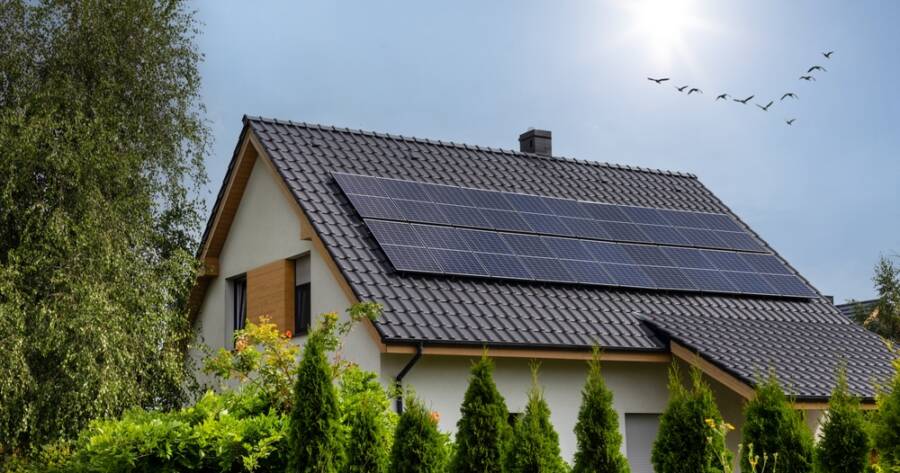In today’s world, energy efficiency is more important than ever. Not only does it help reduce your carbon footprint and contribute to environmental sustainability, but it also saves you money on your energy bills. Making your home more energy-efficient doesn’t require a complete overhaul, but small changes and improvements can have a significant impact. Explore some practical ways to make your home more energy-efficient while improving comfort and reducing costs.
1. Upgrade Insulation
Good insulation is one of the most effective ways to improve energy efficiency in your home. Insulation helps to regulate temperature by keeping warm air in during the winter and cool air in during the summer. If your home is poorly insulated, you could be losing a significant amount of energy through the walls, attic, and floors.
To improve insulation, start by checking areas such as the attic, basement, and walls for any gaps or leaks. Add more insulation where necessary, or replace old insulation with newer, more effective materials. In many cases, simple weather stripping around windows and doors can also prevent drafts and keep your home more comfortable while saving energy.
2. Seal Air Leaks
Air leaks are another common culprit when it comes to energy loss. Cracks and gaps around windows, doors, vents, and pipes can lead to drafts, making it harder to maintain a consistent temperature in your home. To identify air leaks, try using a candle or incense near potential problem areas. If the flame flickers or the smoke blows in one direction, you’ve likely found a leak.
Sealing these leaks with weather stripping, caulk, or foam sealant can make a significant difference in your home’s energy efficiency. By preventing air from escaping or entering, you can reduce your heating and cooling costs year-round.
3. Invest in Energy-Efficient Appliances
Replacing old appliances with energy-efficient models is an investment that pays off in the long run. Energy-efficient appliances, such as refrigerators, washing machines, and dishwashers, use less energy to perform the same tasks, which reduces your overall energy consumption and lowers your utility bills.
Look for appliances that have the ENERGY STAR label, which indicates they meet strict energy-efficiency standards set by the U.S. Environmental Protection Agency (EPA). While energy-efficient appliances might have a higher initial cost, they save you money over time by consuming less electricity.
4. Switch to LED Lighting
Lighting accounts for a significant portion of energy use in homes. Traditional incandescent bulbs use a lot of energy and have a short lifespan, meaning they need to be replaced frequently. Switching to energy-efficient LED bulbs is an easy and cost-effective way to reduce your energy consumption.
LED bulbs use about 75% less energy than incandescent bulbs and last up to 25 times longer. Although LED bulbs may cost more upfront, they save you money in the long run due to their longevity and low energy usage. Consider replacing all of your home’s light bulbs with LEDs, including in outdoor fixtures and recessed lighting.
5. Use Smart Thermostats
A smart thermostat is a fantastic tool for making your home more energy-efficient. Unlike traditional thermostats, smart thermostats learn your habits and adjust the temperature automatically to save energy. They can also be controlled remotely via an app on your phone, allowing you to adjust the temperature when you’re not at home.
By optimizing your heating and cooling schedule, a smart thermostat can help reduce energy use. For example, it can lower the temperature while you’re at work or asleep and raise it when you’re home, ensuring your system isn’t running when it’s not needed.
6. Install Solar Panels
Installing solar panels is one of the most effective ways to make your home energy-efficient, though it does require a larger upfront investment. Solar panels harness the power of the sun to generate electricity, reducing your reliance on grid power. In many cases, you can reduce or eliminate your monthly electricity bills altogether.
Additionally, many states offer tax credits or rebates for homeowners who install solar panels, making it more affordable. Over time, the energy savings and potential for selling excess power back to the grid can offset the initial installation costs.
7. Upgrade Windows and Doors
Old or inefficient windows and doors can contribute to significant energy loss, especially if they are single-glazed or poorly sealed. Upgrading to double-glazed or low-emissivity (Low-E) windows can help keep your home at a more consistent temperature by reducing heat loss during winter and heat gain during summer.
If replacing windows and doors is not in the budget, consider using window film or thermal curtains to improve insulation. These options are more affordable and can still help reduce energy loss by blocking drafts and keeping the interior temperature stable.
8. Use Ceiling Fans
Ceiling fans are a great, energy-efficient alternative to air conditioning. By circulating air throughout your home, ceiling fans help maintain comfort during warm weather without relying on energy-intensive cooling systems. In the winter, ceiling fans can be reversed to push warm air down from the ceiling, making it easier to maintain warmth.
By using ceiling fans in conjunction with air conditioning or heating, you can set the thermostat to a higher or lower temperature without sacrificing comfort, which helps save energy.
Simple and Effective Ways to Enhance Your Home’s Energy Efficiency
Making your home more energy-efficient doesn’t require major renovations or huge expenses. By making simple changes like upgrading insulation, sealing air leaks, and using energy-efficient appliances, you can reduce your energy consumption, lower your utility bills, and contribute to a more sustainable environment. Whether it’s switching to LED lighting or installing a smart thermostat, small changes can make a big impact on your home’s overall efficiency. Start with a few of these tips, and enjoy the long-term benefits of an energy-efficient home.

